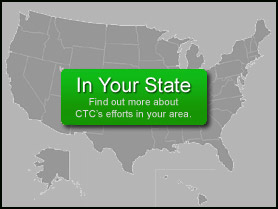Why Make a voter Guide
A voter guide is a good way to raise the trade issue and to publicize candidates’ positions. There are two types of voter guides: one publicizes candidates’ positions on issues citing either past votes or stances taken publicly, the other publicizes responses to a survey you have crafted. Voter guides can be small booklets (this works best for publicizing survey responses) or a one-sided flier. The legal requirements for voter guides are different depending on your organization, and 501(c)(3) organizations in particular have to research this carefully.
- You must include the positions of more than one candidate in the guide.
- The guide may not contain what is called “express advocacy.” This means you can’t advocate for a particular candidate by using phrases such as “vote for candidate x,” or state which candidates support free trade and then urge readers to vote for fair trade this November.
- Avoid making the guide look slanted, e.g. displaying all positive stances for one candidate and negative for the other.
- Avoid using inflammatory language to describe a candidate’s position. You can describe a candidate as “supportive of fast track authority which transfers authority to the executive branch to negotiate trade agreements” but you shouldn’t say a candidate is “supportive of a corporate-driven trade package that sells out Indiana workers and farmers.”
- See sample voter guides above.
- Cite positions from past votes, publicly taken positions, or positions cited in the media.
- Do not use information from any campaign sources.
- See sample candidate survey.
- Voter guides based on a survey must give all candidates an equal chance and space to participate.
- Quote survey responses directly – DO NOT paraphrase.
- Publish the entire results of the survey. If your survey asks open-ended questions such as “what is your stance on x” be sure to give a word or space limit for the reply.
Positions to list and where to find information:
The best way to accurately describe a candidate’s positions is to list how they voted on previous legislation as this is a good way to measure their actions, rather than just their words. Comparing past voting records works well for incumbents who are facing off due to redistricting. Global Trade watch is excellent at tracking candidate positions. Vote-Smart has surveyed many candidates in its National Political Awareness Test (NPAT).
Click here for the resource sheet “How to make a voter guide”




